We specialize in various kinds of commercial roofing, and craft every roofing system around the needs of our clients. Sloped or flat roof? Looking for energy-efficient options? We can help with that! Check out a few of our available options.
Roofing Materials
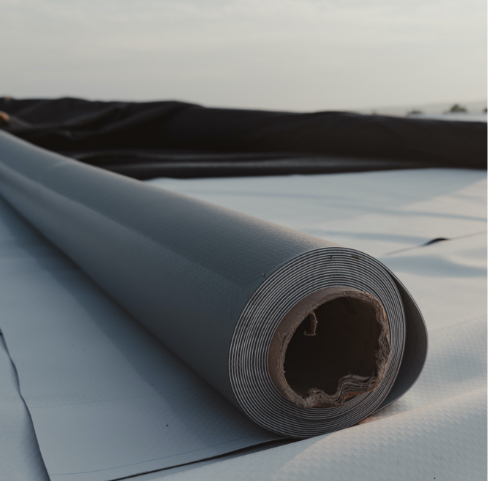
TPO and PVC
Thermoplastic membranes are lightweight, single-ply materials made from synthetic materials like polymers. The most common types are Thermoplastic Polyolefin (TPO) and Polyvinyl Chloride (PVC). They are secured to the roof by various means of mechanical fastening, adhesives, and heat welding. Their welded seams create an effective, watertight seal that repels water, ice, and snow. Puncture and abrasion resistant, they can withstand high temperatures and are resistant to wind and fire (varied). The reflective nature of these materials repels heat and resists shrinkage to ensure seams and sealants stay in place. The lack of heat absorption makes them an energy-efficient option compared to darker colored materials. Depending on the manufacturer, the quality of either material can vary. However, both materials are cost-effective and easily installed.
Get A QuoteThe Difference Between TPO and PVC
Though TPO and PVC have many overlapping characteristics, there are a few differences. Advancements made in TPO membranes during the last several years have given it an advantage over PVC in regards to weathering, tear/break resistance, resistance to fungal growth, and eco-friendliness. TPO can easily be recycled, and unlike PVC, does not contain chlorine (which can be harmful to humans). PVC, however, has greater chemical resistance and doesn’t absorb grease or oils. This makes it the better choice for businesses like restaurants that have grease traps on their roofs.
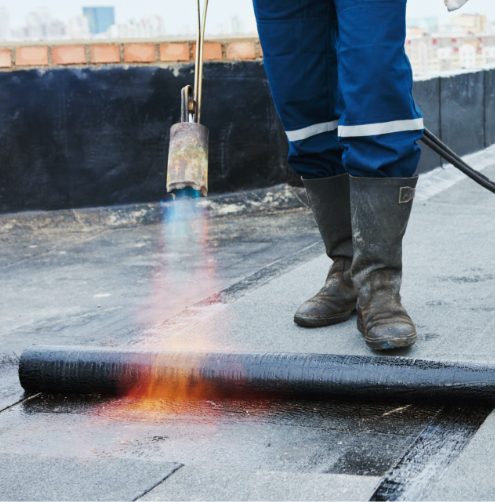
Modified Bitumen
A common choice for large, flat or low-slope roofs, modified bitumen was developed in the 60’s to combine the best parts of asphalt and plaster/rubber materials. A simple definition is: asphalt that has been modified to be flexible. The 5-layer construction provides several types of protection. A fiberglass and/or polyester reinforcement combined with the flexible nature of the material, it is tear/impact resistant, resilient to changes in temperature, and possesses a high tensile strength. Top-surfacing is treated with solar reflective and thermal emissive coatings to reduce your building’s internal cooling requirements and save money on energy (ask about “cool roofing” options).
Modified bitumen is a durable, easily repaired, and low-maintenance roofing option that can last 20-years under the right circumstances. Connect with our team to discuss whether or not a modified bitumen option is right for your building!
Get A QuoteEPDM
Ethylene Propylene Diene Monomer (EPDM) is an extremely durable, single-ply, synthetic rubber material that is popular among flat and low-slope roofs of medium-to-large size. Some applications include warehouses, car dealerships, shopping centers, universities, and even some residential applications like apartment buildings and condominiums. This material boasts an incredible resistance to extreme weather conditions and UV rays. That level of durability and resistance to things like algae growth, means they require little to no maintenance. However, like all roofs, they aren’t indestructible. The good news is, repairing EPDM is easy!
Traditionally, EPDM membranes are black, but are available in a white coloration. When used in the right environment, this white coloration can help reduce summer cooling costs.
Studies have shown that EPDM roofs were still performing “like-new” even at 30-years-old. Properly installed and maintained, an EPDM roof can reach or exceed 40-50 years!
Get A Quote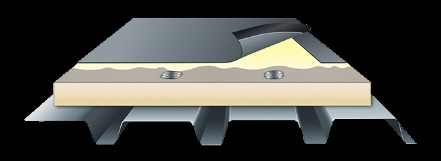
Fully Adhered
This method is generally most popular among new roofing construction and roof replacement. Fully adhered EPDM is ideal for roofs with limited load bearing capabilities or that have a contoured/irregular configuration. It is a flexible, lightweight system that can withstand high winds, be easily inspected, and regularly maintained. Fully adhered EPDM is often more expensive because of the time and materials involved during installation.
Get A Quote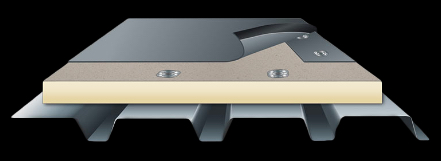
Mechanically Attached
Mechanically attached EPDM is ideal for roofs with a high number of penetrations or obstructions. The membrane is fastened to the metal roofing deck with screws, the next membrane sheet is overlaid, and a seal is created by heat welding the membranes together. This creates a single, flat, watertight surface. Mechanically attached EPDM is often installed faster at a lower cost.
Get A Quote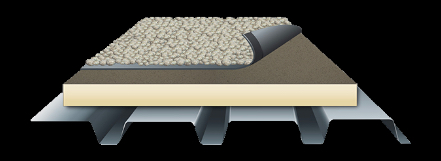
Ballasted
Ballasted systems are ideal for large, flat roofs without penetrations or fixtures (as it is placed on top of the existing substrate). They are suitable for a variety of applications as long as the structure can accommodate the extra weight of the ballast and does not exceed a slope of 10%. Due to low-maintenance requirements and speed of installation, ballasted systems are the most cost-effective option for EPDM installation.
Contact our team today for more information and discover if EPDM is right for your building!
Get A Quote